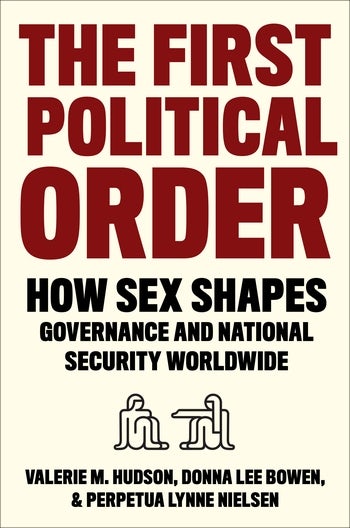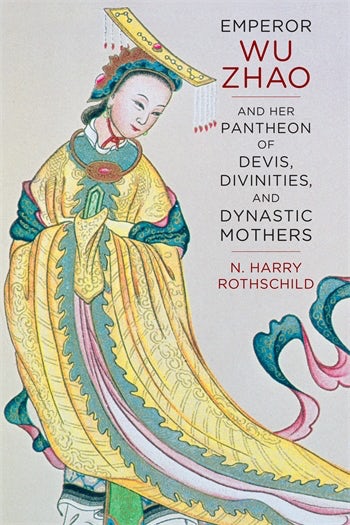The Global History of the Nineteenth Amendment
By Mona L. Siegel

“A stunning retelling of the Great War’s aftermath and how women rose up at the war’s end to demand a different and better world. Siegel’s evocative prose transports us back in time and around the world as women from east, west, north, and south descend on Versailles in pursuit of their rights. Peace on Our Terms is a stirring, extraordinary tale of how the denial of voice to more than half the world’s people shaped our time. This is history and drama at its finest.”
~ Dorothy Sue Cobble, coauthor of Feminism Unfinished: A Short, Surprising History of American Women’s Movements
International Women’s Day is this Sunday, but did you know that August 18, will mark the one-hundredth anniversary of the ratification of the Nineteenth Amendment? In today’s Women’s History Month post, Mona L. Siegel, author of Peace on Our Terms: The Global Battle for Women’s Rights After the First World War, considers President Woodrow Wilson’s wartime speeches and the events on the global stage that fed into the suffragists’ cause.
If you’re eager to learn more about this exciting history, enter our drawing for a chance to win a copy of the book!
• • • • • •
Seldom do people clear their March calendars in anticipation of Women’s History Month, but 2020 is an exception. This year marks the one-hundredth anniversary of the ratification of the Nineteenth Amendment. Communities across America are seizing upon Women’s History Month to commemorate American suffragists’ efforts to win federal recognition of women’s right to vote.
It should be noted that not all women benefited immediately from the passage of the Nineteenth Amendment. Native American, Chinese American, and African American women in the South would have to wait years to cast their first ballots. Nevertheless, Americans justifiably view the enshrining of women’s suffrage in the Constitution as a milestone on the path to becoming a more perfect union.
This particular electoral reform was long in coming. American women fought for the right to vote for decades before male politicians were willing to act. The protracted nature of this struggle raises the question: why 1920? What was it about this moment in history that finally pushed the American suffrage amendment across the finish line?
“American women’s acquisition of the vote, in other words, is part of a global story.”
Much of the answer to this question lies with American suffragists and their relentless effort to win popular support for women’s enfranchisement. A significant and less recognized part of the answer, however, is located far beyond American shores in the blood-soaked battlefields of Europe.
The Nineteenth Amendment crossed the necessary two-thirds threshold in the House of Representatives in January 1918, just as America was sending its first troops to France to fight in the World War I. Senate approval came eighteen months later, in June 1919, as the Paris Peace Conference was coming to a close. In both houses, matters of war and peace played heavily into legislators’ decisions, linking the passage of the Nineteenth Amendment in the United States to dramatic events around the world.
American women’s acquisition of the vote, in other words, is part of a global story. As my book Peace on Our Terms: The Global Battle for Women’s Rights After the First World War demonstrates, 1919 marked a watershed moment in global women’s activism. The passage of the Nineteenth Amendment owes much to concerns explicitly tied to World War I and its aftermath.
“The passage of the Nineteenth Amendment owes much to concerns explicitly tied to World War I and its aftermath.”
When President Woodrow Wilson went before Congress in April 1917 to ask for a formal declaration of war against Germany, he argued that America had a historic role to play on the international stage. “The world,” he famously proclaimed, “must be made safe for democracy.” Representative Jeannette Rankin of Montana, the first woman to serve in the House of Representatives, disagreed. She cast one of fifty dissenting votes against a declaration of war, to no avail. America’s destiny would henceforth be tied to the outcome of the First World War.
Although Rankin did not approve of America’s entry into the conflict, she did see the utility of President Wilson’s wartime speeches in building support for a cause near and dear to her heart: women’s suffrage. When the Nineteenth Amendment came up for debate on the House floor in January 1918, Rankin implored, “how shall we explain … the meaning of democracy if the same Congress that voted for war to make the world safe for democracy refuses to give this small measure of democracy to the women of our country?” It was a question that American suffragists would raise with mounting insistence as the war progressed.
American suffragists were not alone, however, in suggesting that global leaders’ calls for a postwar order rooted in popular sovereignty and national self-determination had immediate implications for women. Suffragists abroad were avidly following Wilson’s wartime speeches as well, seeing in them a forceful leverage point for demanding women’s rights in the peace to follow.
“Suffragists abroad were avidly following Wilson’s wartime speeches as well, seeing in them a forceful leverage point for demanding women’s rights in the peace to follow.”
French suffragists were the first to turn such ideas into action. In early 1918, they delivered into Wilson’s hands a letter signed by women from a half dozen Allied nations. In it, they asked the president to publicly endorse the idea that women’s suffrage must serve as a “pillar of future law” around the world. To their delight, in June 1918 Wilson responded: “I agree without reservation that the full and sincere democratic reconstruction of the world for which we are striving … will not have been completely or adequately attained until women are admitted to the suffrage.”
In January 1919, just days after the Paris Peace Conference got underway, Wilson met with some of these same European suffragists in private audience, and they drove home the message that “women’s rights must not be forgotten in the plans for the future peace.”
Two months later, Wilson got an earful from Egyptian women fighting a parallel battle for democracy and self-determination. In March 1919, women in Cairo joined in a nationwide uprising against British imperialism and in support of an independent, democratic Egyptian state. When the British police commissioner met their protests with a show of force, the women sent a letter to American diplomatic offices in Cairo stating, “We believe in President Wilson and in his principles of liberty and human fraternity. We beg you to send our message to America and to President Wilson personally. Let them hear our call. We believe they will not suffer Liberty to be crushed in Egypt.”
“Suffragists’ powerful message—both at home and abroad—was that America’s status as a beacon of global democracy depended fundamentally on support for women’s rights at home and around the world.”
These women’s voices were not isolated. In 1919 alone, at major international conferences in Paris, Zurich, and Washington, DC, and in street demonstrations stretching from Cairo to Beijing, female activists insisted that global peace and stability depended on the firm recognition of women’s social, political, and economic rights in national and international law.
Against this dramatic backdrop, with Wilson’s encouragement, male legislators in the United States finally acquiesced and passed the Nineteenth Amendment, sending the measure to the states for ratification. Global events fed national ones. Suffragists’ powerful message—both at home and abroad—was that America’s status as a beacon of global democracy depended fundamentally on support for women’s rights at home and around the world. A century ago, this message helped secure American women’s right to vote. It is an idea that bears repeating today.
Save 30% when your order a copy of Peace on Our Terms, or any of our Women’s History Month featured titles, from our website by using coupon code: CUP30 at checkout!








